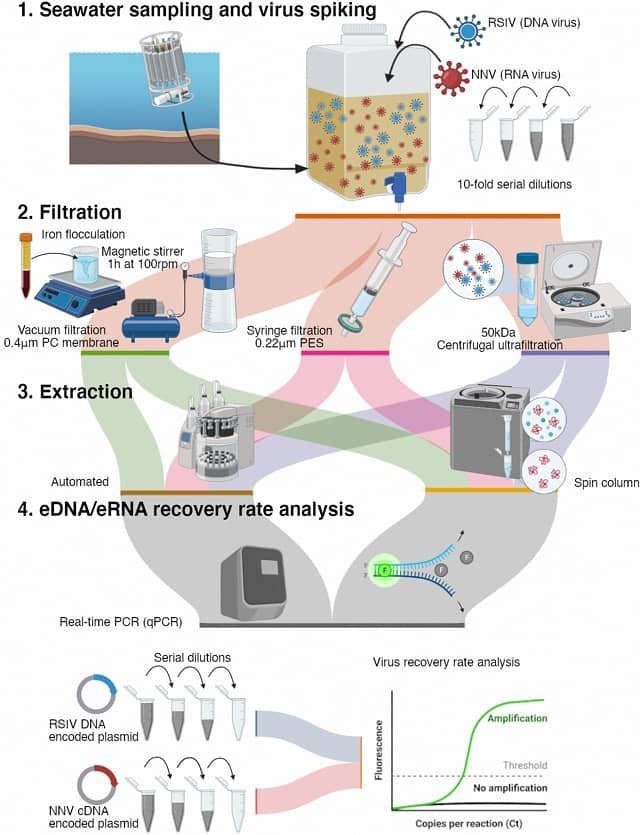by The Roslin Institute
Resource detailing genome of Nile tilapia supports sustainable farming of important strain of livestock.
A reference DNA code for a genetically improved strain of a key species of fish offers the potential to improve food security for millions of the world’s poorest people.
The fundamental resource will support fish breeders to develop strains of Nile tilapia that grow large, grow quickly, and are resilient to the environmental challenges of a warming planet.
The detailed resource also reveals substantial genetic variation in farmed strains of tilapia, highlighting the need to use the strain-specific resource to inform future breeding programmes.
Collaborative study
The reference genome, produced in a collaboration between the Earlham Institute, WorldFish, and the Roslin Institute, part of the Royal (Dick) School of Veterinary Studies, will support the farming of the third most farmed species of fish in the world.
The Nile tilapia is a popular species of farmed fish largely thanks to continuous efforts to breed strains that can grow and gain weight quickly.
The Genetically Improved Farmed Tilapia (GIFT) programme, spearheaded by the research institution WorldFish (CGIAR), has given rise to an elite strain found worldwide, but this has been achieved through selective breeding without a complete reference genome.
“A reference genome provides a full, annotated catalogue of all the genes in an organism. This crucial resource is the basis for modern breeding programmes. WorldFish, who are leading on further developments of GIFT, can now use the reference genome as the baseline to work from when looking to breed beneficial traits”, said Dr Wilfried Haerty , Study author and Group Leader, Earlham Institute.
Stay Always Informed
Join our communities to instantly receive the most important news, reports, and analysis from the aquaculture industry.
To accelerate the development of improved GIFT strains through genomic selection, researchers at the Earlham Institute and Roslin Institute teamed up to generate a near complete and high-quality reference genome.
WorldFish provided tissues to Earlham Institute researchers, who used a combination of DNA sequencing techniques to create a chromosome level genome assembly for tilapia. This was supported by a map of genes that occur close to one another in the genome, developed at the Roslin Institute, built on work from WorldFish.
The genome was then annotated with information relating to the locations and functions of various elements, using a cutting-edge approach developed at the Earlham Institute.
“This collaboration has laid a strong foundation for us to produce new strains of GIFT that are more resilient to a changing climate – reducing production risks for fish farmers and increasing yield to feed nutritious animal protein to a growing global population,” said Dr John Benzie, WorldFish Acting Director of Aquatic Foods Biosciences.
The GIFT strain was originally developed from a mix of commercial and wild Nile tilapia strains, as well as crosses with other species. By using the genomes of closely related species, they were able to reveal the extent to which genetic material may have passed between species in the past – and identify the specific regions in the GIFT genome.
“The insights offered by development of the entire genome of this key fish species will enable research towards ensuring sustainably produced supplies, to support a healthy source of nutrition for growing populations”, said Dr Diego Robledo, Aquaculture genetics group leader, Roslin Institute.
Reference (open access):
Etherington, G.J., Nash, W., Ciezarek, A. et al. Chromosome-level genome sequence of the Genetically Improved Farmed Tilapia (GIFT, Oreochromis niloticus) highlights regions of introgression with O. mossambicus. BMC Genomics 23, 832 (2022). https://doi.org/10.1186/s12864-022-09065-8
Editor at the digital magazine AquaHoy. He holds a degree in Aquaculture Biology from the National University of Santa (UNS) and a Master’s degree in Science and Innovation Management from the Polytechnic University of Valencia, with postgraduate diplomas in Business Innovation and Innovation Management. He possesses extensive experience in the aquaculture and fisheries sector, having led the Fisheries Innovation Unit of the National Program for Innovation in Fisheries and Aquaculture (PNIPA). He has served as a senior consultant in technology watch, an innovation project formulator and advisor, and a lecturer at UNS. He is a member of the Peruvian College of Biologists and was recognized by the World Aquaculture Society (WAS) in 2016 for his contribution to aquaculture.




